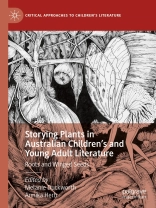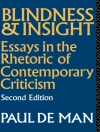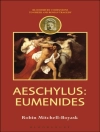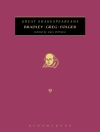Storying Plants in Australian Children’s and Young Adult Literature: Roots and Winged Seeds explores cultural and historical aspects of the representation of plants in Australian children’s and young adult literature, encompassing colonial, postcolonial, and Indigenous perspectives. While plants tend to be backgrounded as of less narrative interest than animals and humans, this book, in conversation with the field of critical plant studies, approaches them as living beings worthy of attention. Australia is home to over 20, 000 species of native plants – from pungent Eucalypts to twisting mangroves, from tiny orchids to spiky, silvery spinifex. Indigenous Australians have lived with, relied upon, and cultivated these plants for many thousands of years. When European explorers and colonists first invaded Australia, unfamiliar species of plants captured their imagination. Vulnerable to bushfires, climate change, and introduced species, plants continue to occupy fraught butvital places in Australian ecologies, texts, and cultures. Discussing writers from Ambelin Kwaymullina and Aunty Joy Murphy to May Gibbs and Ethel Turner, and embracing transnational perspectives from Ukraine, Poland, and Aotearoa New Zealand, Storying Plants addresses the stories told about plants but also the stories that plants themselves tell, engaging with the wide-ranging significance of plants in Australian children’s and Young Adult literature.
表中的内容
Introduction: Storying Plants Melanie Duckworth and Annika Herb.- Part 1: Plant temporalities and belonging in picture books.- Chapter 1: Aboriginal Australian Picturebooks: Ceremonial Listening to Plants Brooke Collins-Gearing.- Chapter 2: Trees as Agents in/of Culture: A Diffractive Reading of Plant Representation in Welcome to Country and The Rabbits Lykke H. Alara Guanio-Uluru.- Chapter 3: Longing and Belonging in the Green Worlds of Jeannie Baker Penni Russon.- Part 2: Storying trees.- Chapter 4: Forever and ever: the fig tree and its journey through time in Nadia Wheatley’s My Place Sarah Mokrzycki.- Chapter 5: The voice of the she-oak: Vegetal poetics and hope in Kirli Saunders’ verse novel Bindi Melanie Duckworth.- Part 3: Gumnuts and pohutakawa babies.- Chapter 6: Gumnuts, Plant-Human Hybridity, and the Issue of Belonging Terri Doughty.- Chapter 7: Conservation and the Flower Fairy Tradition in Avis Acres and Maurice Gee Kay Hancock and Kathryn Walls.- Part 4: Winged seeds:Exile, adventure, and migration Chapter 8: Seeking Home, Discovering the Bush: The Australian Bush Envisaged in Ukrainian Children’s Books Maryna Vardanian and Lydia Kokkola.- Chapter 9: In quest of strangeness and freedom. The Polish perspective on Australian and New Zealand nature in texts for YA readers Maciej Wróblewski.- Part 5: Vegetal visions in young adult literature.- Chapter 10: “Something here is completely, horribly, unnaturally wrong”: Uncanny Vegetation in Amie Kaufman and Jay Kristoff’s Aurora Rising (2019) Alena Cicholewski.- Chapter 11: Vegetal memory, power, and resistance Ambelin Kwaymullina’s The Tribe trilogy Nicole Kennedy and Melanie Duckworth.- Chapter 12: “Then something started growing in the emptiness”: Revisiting the lost child and the bush in Australian colonial and postcolonial fiction Annika Herb.
关于作者
Melanie Duckworth is an associate professor of English literature at Østfold University College, Norway. Her research interests include Australian literature, contemporary poetry, and ecocriticism, and her research is published in journals including Environmental Humanities, International Research in Children’s Literature, Bookbird, and Australian Literary Studies. Melanie is co-editor of Plants in Children’s and Young Adult Literature (Routledge 2022).
Annika Herb is a researcher, writer, and Education Development Lead at the University of Newcastle, Australia, living and working on Awabakal land. Her research interests include children’s and Young Adult literature, gender and sexuality, queer literature, colonial, postcolonial, and Indigenous literature, and she has published research in Westerly, M/C Journal, Girlhood Studies, and Children’s Literature in Education.












